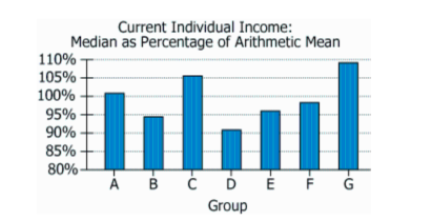Events & Promotions
|
|

GMAT Club Daily Prep
Thank you for using the timer - this advanced tool can estimate your performance and suggest more practice questions. We have subscribed you to Daily Prep Questions via email.
Customized
for You
Track
Your Progress
Practice
Pays
Not interested in getting valuable practice questions and articles delivered to your email? No problem, unsubscribe here.
- Nov 19
12:30 PM EST
-01:30 PM EST
Learn how Keshav, a Chartered Accountant, scored an impressive 705 on GMAT in just 30 days with GMATWhiz's expert guidance. In this video, he shares preparation tips and strategies that worked for him, including the mock, time management, and more - Nov 18
11:00 AM PST
-12:00 PM PST
Join us in a live GMAT practice session and solve 30 challenging GMAT questions with other test takers in timed conditions, covering GMAT Quant, Data Sufficiency, Data Insights, Reading Comprehension, and Critical Reasoning questions. - Nov 20
01:30 PM EST
-02:30 PM IST
Learn how Kamakshi achieved a GMAT 675 with an impressive 96th %ile in Data Insights. Discover the unique methods and exam strategies that helped her excel in DI along with other sections for a balanced and high score. - Nov 22
11:00 AM IST
-01:00 PM IST
Do RC/MSR passages scare you? e-GMAT is conducting a masterclass to help you learn – Learn effective reading strategies Tackle difficult RC & MSR with confidence Excel in timed test environment - Nov 23
11:00 AM IST
-01:00 PM IST
Attend this free GMAT Algebra Webinar and learn how to master the most challenging Inequalities and Absolute Value problems with ease. - Nov 24
07:00 PM PST
-08:00 PM PST
Full-length FE mock with insightful analytics, weakness diagnosis, and video explanations! - Nov 25
10:00 AM EST
-11:00 AM EST
Prefer video-based learning? The Target Test Prep OnDemand course is a one-of-a-kind video masterclass featuring 400 hours of lecture-style teaching by Scott Woodbury-Stewart, founder of Target Test Prep and one of the most accomplished GMAT instructors.
Kudos
Bookmarks
Dropdown 1: 3
Dropdown 2: G
Be sure to select an answer first to save it in the Error Log before revealing the correct answer (OA)!
Difficulty:
 75%
(hard)
75%
(hard)
Question Stats:
54% (02:02) correct 46%
(02:24)
wrong
46%
(02:24)
wrong  based on 2244
sessions
based on 2244
sessions
History
Date
Time
Result
Not Attempted Yet

The graph shows, for 7 groups—Groups A through G—the relationship between the median and the arithmetic mean of annual salaries for members of that group. All 7 groups have the same number of employees and each group plans to hire a new worker at the group's median salary.
Based on the information provided, select from each drop-down menu the option that creates the most accurate statement.
For exactly of the groups, the addition of the new worker will result in an increase in the arithmetic mean salary for the group. For Group , the increase (as a percentage of the previous arithmetic mean) will be the greatest.
ID: 101123
ShowHide Answer
Official Answer
Dropdown 1: 3
Dropdown 2: G
Kudos
Bookmarks
This question requires the use of the following basic property of Statistics:
Adding a value to a set, that is greater than the mean, will increase the overall mean(average) value of the set.
Here, we are adding the median value of each group, as a new person's salary.
To understand how the mean would get affected by this new addition, we require the relationship between the mean and the median of that particular group.
Hence, if Median is greater than the Mean, we can safely, say that the overall value of the Mean will increase.
You can see that the median is greather than the mean in case of Groups A, C & G. Hence, these groups will see a rise in Mean after the addition of their respective Medians.
The answer to the first blank is 3.
The highest increase will be in group G, since there, the median is around 109% of the Mean. Larger than any other group. Hence, the answer to the second question is G.
Adding a value to a set, that is greater than the mean, will increase the overall mean(average) value of the set.
Here, we are adding the median value of each group, as a new person's salary.
To understand how the mean would get affected by this new addition, we require the relationship between the mean and the median of that particular group.
Hence, if Median is greater than the Mean, we can safely, say that the overall value of the Mean will increase.
You can see that the median is greather than the mean in case of Groups A, C & G. Hence, these groups will see a rise in Mean after the addition of their respective Medians.
The answer to the first blank is 3.
The highest increase will be in group G, since there, the median is around 109% of the Mean. Larger than any other group. Hence, the answer to the second question is G.
General Discussion
KanikaJain
Kudos
Bookmarks
Shouldn't the answer to the second question be G?
















